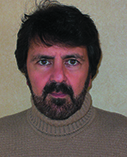
Nikos K. Logothetis
Max Planck Institute for Biological Cybernetics
|
Primary Section: 28, Systems Neuroscience Membership Type:
International Member
(elected 2009)
|
Research Interests
Research in my laboratory concentrates on the neural mechanisms of perception and object recognition. Although our basic research revolves around vision, a number of independent collaborators are also investigating the relationship between neural activity and perception using other sensory modalities. I firmly believe that such scientific questions require a multimodal methodological approach that integrates information obtained from single units with that derived from mass action potentials as well as from a number of activity-related, surrogate signals such as those monitored during noninvasive experiments. Parallel to our ongoing research, therefore, we are also working to develop methodologies that will permit us to study neural networks in the context of behavioral paradigms. We have already designed and implemented two high-field magnetic resonance imaging systems for functional, anatomical and spectroscopic imaging. The systems are endowed with all the necessary hard- and software to conduct simultaneous imaging and recordings, and they are being used to study the function, connectivity, and neurochemistry of the non-human primate brain. Furthermore, while continuing to exploit traditional neuroimaging in our experiments, we are also investigating the relationship of neural activity to the MR-measurable hemodynamic responses and experimenting with methods that do not rely on hemodynamic responses at all. In the context of the last-named project, a group of synthetic and coordination chemists in my laboratory are attempting to synthesize and evaluate MR-detectable smart probes that change magnetic properties as a function of the concentration of ions and molecules involved in neural signaling. Smart contrast agents, if designed and tested appropriately, promise to revolutionize invasive neuroimaging and would represent a quantum leap forward in signal-to-noise ratio, spatial detail and specificity, while affording unprecedented temporal resolution.

